What is an Artificial Intelligence Robot: A Comprehensive and Practical Definition

#Artificial_Intelligence_Robot is an entity that, leveraging #Artificial_Intelligence, is capable of performing tasks that previously required human intervention.
These robots appear in various forms, from simple chatbot software to complex physical robots used in industry and medicine.
In fact, an AI robot attempts to improve efficiency and accuracy in performing various tasks by mimicking human cognitive processes, such as learning, reasoning, and problem-solving.
The precise definition of #Artificial_Intelligence_Robot depends on its application and level of complexity.
However, in general, it can be said that these robots use #Machine_Learning algorithms to analyze data and make intelligent decisions.
They are able to identify patterns by receiving information from their surroundings and react based on them.
This capability has turned AI robots into powerful tools in various fields.
Artificial intelligence robots also play a significant role in our daily lives.
From voice assistants like Siri and Alexa to film and music recommendation systems, all benefit from artificial intelligence robot technology.
These systems provide personalized suggestions by analyzing users’ tastes and behaviors, which improves the user experience.
Does your current company website not reflect your brand’s credibility and power as it should? Rasaweb solves this challenge for you with professional corporate website design.
✅ Increase visitor credibility and trust
✅ Attract more targeted customers
⚡ Click for free consultation!
Main Components of an AI Robot

An AI robot consists of several main components, each playing an important role in its overall performance.
These components include sensors, processors, actuators, and AI software.
Sensors: Sensors are responsible for collecting information from the environment.
This information can include sound, images, temperature, pressure, and other data related to the environment.
Sensors help the AI robot to become aware of environmental conditions and react accordingly.
Processors: Processors are the brains of the AI robot and are responsible for analyzing the data collected by the sensors.
They use AI algorithms to identify patterns and make necessary decisions.
Processors usually consist of powerful computers or specific integrated circuits.
Actuators: Actuators are responsible for performing physical actions.
This action can include movement, deformation, sound production, or any other type of activity that the AI robot needs to perform its task.
Actuators usually consist of motors, pumps, valves, and other mechanical or electronic devices.
AI Software: AI software is the beating heart of the AI robot and is responsible for controlling and coordinating between different components.
This software includes machine learning algorithms, neural networks, and other AI techniques that enable the AI robot to learn, reason, and decide.
Extensive Applications of AI Robots in Various Industries
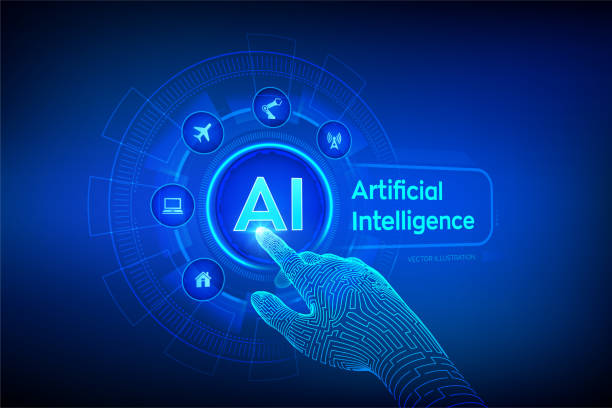
AI robots have extensive applications in various industries and are increasingly reshaping industries.
From manufacturing and transportation to healthcare and customer service, AI robots help companies increase their efficiency, reduce costs, and provide better services.
In the manufacturing industry, AI robots are used to perform repetitive and dangerous tasks such as welding, painting, and packaging.
These robots are able to work with high accuracy and speed and prevent accidents.
Also, AI robots can be used to monitor product quality and identify defects in the production line.
In the transportation industry, AI robots are developing self-driving cars.
These cars are able to move on roads without human intervention using sensors and AI algorithms.
Self-driving cars can reduce traffic, increase safety, and help disabled people move around more easily.
In the healthcare industry, AI robots are used for diagnosing diseases, performing surgeries, and providing remote medical care.
These robots are able to identify disease patterns by analyzing medical images and help doctors make more accurate diagnoses.
Also, AI robots can be used to help the elderly and disabled with daily activities.
In the customer service industry, AI robots are used as chatbots to answer customer questions and provide technical support.
These chatbots are able to be available 24 hours a day and respond quickly to customer questions.
Also, AI robots can be used to analyze customer feedback and identify the strengths and weaknesses of products and services.
| Industry | Application of AI Robot |
|---|---|
| Manufacturing | Welding, painting, packaging, quality control |
| Transportation | Self-driving cars, traffic management |
| Healthcare | Disease diagnosis, surgery, remote care |
| Customer Service | Chatbot, technical support, feedback analysis |
Advantages and Disadvantages of Using AI Robots
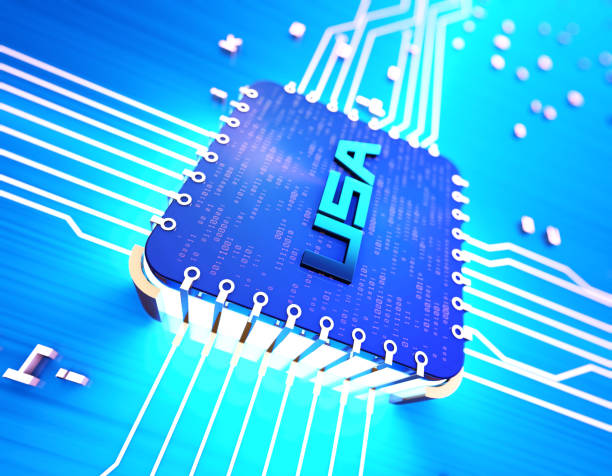
The use of AI robots has its own advantages and disadvantages.
On the one hand, AI robots can increase efficiency, reduce costs, and provide better services.
On the other hand, AI robots can cause job losses, violate privacy, and create security risks.
Advantages:
- Increased Efficiency: AI robots are able to perform tasks faster and more accurately than humans.
- Reduced Costs: AI robots can reduce labor costs and increase productivity.
- Improved Services: AI robots can provide better services to customers and improve the user experience.
- Reduced Risks: AI robots can perform dangerous tasks and prevent accidents.
Disadvantages:
- Job Losses: AI robots can cause the loss of human jobs, especially repetitive and simple jobs.
- Privacy Violation: AI robots can collect and analyze users’ personal information, which can lead to privacy violations.
- Security Risks: AI robots can be attacked by hackers and used for malicious purposes.
- Ethical Issues: The use of AI robots can raise various ethical issues, such as accountability for decisions made by the robot.
Given the advantages and disadvantages of using AI robots, it is necessary to exercise caution and diligence in using this technology and to establish appropriate rules and regulations for it.
The correct and responsible use of AI robots can help advance and develop societies, while the misuse of it can have dire consequences.
Are you annoyed by losing customers who visit your site to buy?
Rasawab is your expert solution for having a successful online store.
✅ Significantly increase your online sales
✅ Create trust and professional branding with customers⚡ Get free advice from Rasawab experts!
What Does the Future Hold for AI Robots
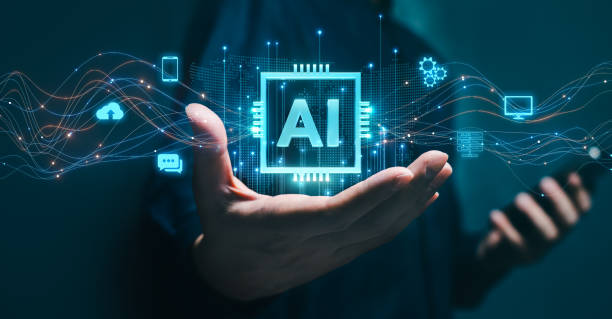
The future of AI robots is very bright and full of potential.
With the ever-increasing advances in artificial intelligence, it is expected that AI robots will play a much more important role in our lives in the coming years.
In the future, AI robots will be able to perform more complex tasks, make smarter decisions, and interact with humans more naturally.
AI robots will revolutionize various fields such as medicine, education, transportation, and manufacturing.
Predictions:
- Medicine: AI robots will be able to diagnose diseases more accurately, provide more personalized treatments, and perform more complex surgeries.
- Education: AI robots will be able to act as personalized teachers and help students learn better.
- Transportation: Self-driving cars will be widely present on the roads, reducing traffic and increasing safety.
- Manufacturing: AI robots will be able to fully automate factories and significantly increase productivity.
However, it is necessary to pay attention to the potential challenges and dangers arising from the advancement of AI robots.
For example, job losses, privacy violations, and security risks are issues that need to be seriously considered.
To ensure that AI robots are used for the benefit of humanity, it is necessary to establish appropriate laws and regulations and conduct more research in the field of AI ethics.
How Does an AI Robot Learn?
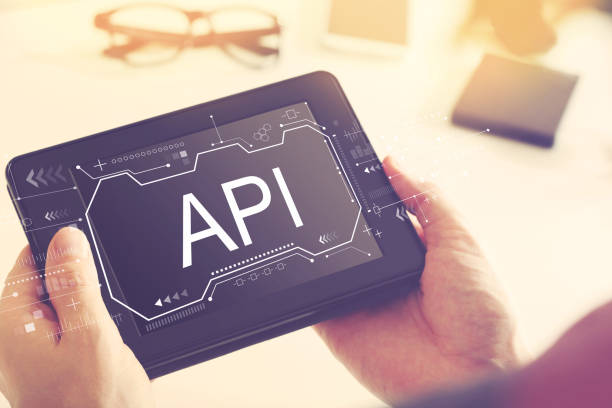
Learning in AI robots is done through Machine Learning algorithms.
These algorithms allow the robot to identify patterns by analyzing data, increase its knowledge based on them, and improve its performance.
In general, there are three main types of machine learning: supervised learning, unsupervised learning, and reinforcement learning.
Supervised Learning: In this type of learning, the robot is trained using labeled data.
This means that each input data has a specific output.
By analyzing this data, the robot tries to learn the relationship between the input and output and be able to predict the appropriate output for new data.
Unsupervised Learning: In this type of learning, the robot is trained using unlabeled data.
This means that the data has no specific output.
By analyzing this data, the robot tries to identify hidden patterns and structures and categorize the data.
Reinforcement Learning: In this type of learning, the robot is trained using environmental feedback.
By taking various actions in the environment, the robot receives feedback (positive or negative) and tries to learn a policy that has the most positive feedback.
This type of learning is very suitable for robots that need to operate in dynamic and unpredictable environments.
In addition to these three main types, there are other techniques for learning in AI robots, such as Deep Learning, which uses artificial neural networks with many layers to analyze data.
Deep learning has achieved very good results in areas such as image recognition, natural language processing, and machine translation.
Challenges Facing the Development of AI Robots
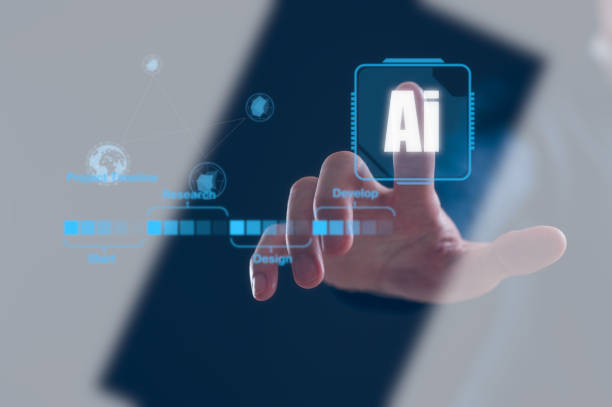
The development of AI robots faces several challenges.
These challenges include technical challenges, ethical challenges, and social challenges.
Technical Challenges:
- Need for Big Data: Machine learning algorithms need a large volume of data to train.
Collecting and labeling this data can be very time-consuming and costly. - Interpretability Problem: Deep learning algorithms are usually very complex and it is difficult to understand why an algorithm has reached a particular result.
This can cause problems in the area of accountability and trust. - Hardware Limitations: Running AI algorithms requires a lot of processing power.
Developing more powerful and efficient hardware is one of the main challenges in the field of AI robots.
Ethical Challenges:
- Accountability: If an AI robot makes a wrong decision and causes damage, who will be responsible? This question is one of the most important ethical challenges in the field of AI robots.
- Privacy: AI robots are able to collect and analyze users’ personal information.
This can lead to privacy violations. - Discrimination: AI algorithms may discriminate due to bias in training data.
Social Challenges:
- Job Losses: AI robots can cause the loss of human jobs.
This can lead to increased unemployment and social inequality. - Fear of AI: Some people are afraid of AI and worry that robots will dominate humans in the future.
- Need for Training: To use AI robots, people need to be trained and acquire new skills.
To overcome these challenges, more research needs to be done in the field of AI robots, appropriate laws and regulations need to be established, and necessary training needs to be provided to people.
The correct and responsible use of AI robots can help advance and develop societies.
AI Robot in Iran: Vision and Opportunities

AI robots are also developing and advancing in Iran, like other countries in the world.
Given the country’s high potential in the field of specialized human resources and access to data resources, there are many opportunities for the development of AI robots in Iran.
Vision:
- Industrial Development: AI robots can help develop various industries in Iran.
For example, in the manufacturing industry, robots can increase efficiency and reduce costs.
In the agricultural industry, robots can help better manage resources and increase productivity. - Improving Public Services: AI robots can help improve public services in Iran.
For example, in the field of health and treatment, robots can help diagnose diseases and provide medical care.
In the field of education, robots can act as personalized teachers. - Solving Social Problems: AI robots can help solve social problems in Iran.
For example, robots can help reduce traffic, reduce air pollution, and improve security.
Opportunities:
- Specialized Human Resources: Iran has a large number of talented experts and engineers in the field of artificial intelligence.
These people can play an important role in the development of AI robots in Iran. - Data Resources: Iran has many data resources that can be used to train AI algorithms.
- Domestic Market: Iran has a large domestic market that can be used for products and services based on AI robots.
To take advantage of these opportunities, the government and the private sector need to cooperate and make the necessary investments in the field of AI robots.
Also, the necessary training needs to be provided to people and appropriate laws and regulations need to be established for the use of AI robots.
Are you falling behind in competition with large online stores?
Rasawab professional store website design puts your business online and increases your market share!
✅ Increase brand credibility and customer trust
✅ Easy shopping experience leads to more sales
⚡ Take action now to receive free website design consultation!
Important Points in Choosing and Using AI Robots
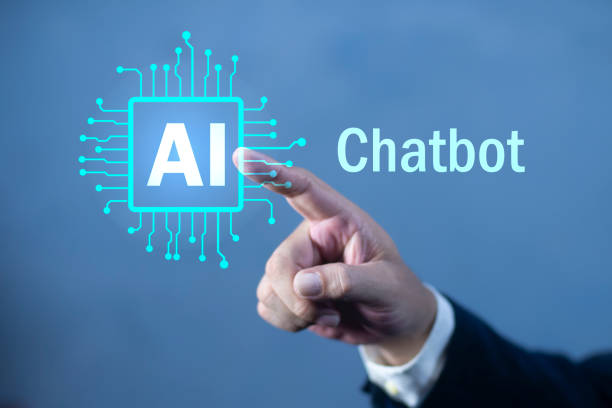
Choosing and using AI robots requires attention to important points.
Here are some of these points:
Determine Needs: Before choosing an AI robot, you should accurately determine your needs.
What tasks do you want the robot to perform? How much accuracy and speed is important to you? What is your budget?
Research and Review: Before buying, research different types of AI robots and compare their features and capabilities with each other.
Read user and expert reviews and use their experiences.
Compatibility: Make sure that the AI robot is compatible with your existing systems and equipment.
Can the robot easily communicate with your software? Do you need hardware changes?
Security: Consider the security of the AI robot.
Is the robot resistant to cyber attacks? Is your information at risk?
Support: Make sure that there is strong technical support for the AI robot.
If there is a problem, can you easily contact support? Are you provided with the necessary training to use the robot?
Costs: Consider the costs of buying, installing, training, and maintaining the AI robot.
Are these costs compatible with your budget? Will you have a good return on investment?
By following these tips, you can choose a suitable AI robot and use it effectively.
The correct use of AI robots can help improve efficiency, reduce costs, and increase productivity.
Summary and a Look at the Future of AI Robots
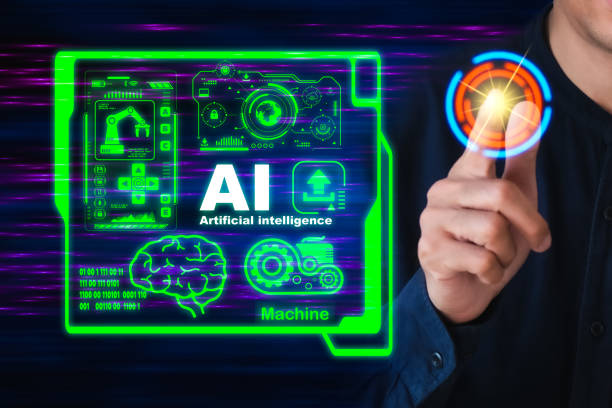
In this article, we comprehensively examined AI robots and examined its various aspects.
From the definition and main components of AI robots to their applications, advantages, disadvantages, challenges, and future, we have tried to present a complete picture of this emerging technology.
As we have seen, AI robots have a great potential to reshape various industries and improve human lives.
From manufacturing and transportation to healthcare and customer service, AI robots can help increase efficiency, reduce costs, and provide better services.
However, it is necessary to pay attention to the potential challenges and dangers arising from the advancement of AI robots.
Job losses, privacy violations, and security risks are issues that need to be seriously considered.
To ensure that AI robots are used for the benefit of humanity, it is necessary to establish appropriate laws and regulations and conduct more research in the field of AI ethics.
AI Robot
In the future, AI robots are expected to play a much more important role in our lives.
With the ever-increasing advances in artificial intelligence, robots will be able to perform more complex tasks, make smarter decisions, and interact with humans more naturally.
We hope that by using AI robots correctly and responsibly, we can achieve a better and more advanced world.
| Element | Description |
|---|---|
| Sensors | Collect information from the environment |
| Processors | Analyze information and make decisions |
| Actuators | Performing a physical action |
| AI Software | Control and coordination |
Frequently Asked Questions
| Question | Answer |
|---|---|
| What is an AI Robot? | It is a robot that uses artificial intelligence capabilities to understand the environment, reason, learn, and make decisions to perform complex tasks independently. |
| What is the main difference between a regular robot and an AI robot? | AI robots can learn and adapt to their environment, while regular robots usually operate based on fixed and pre-determined plans. |
| In what areas are AI robots used? | In fields such as industry (production lines), medicine (robotic surgeries), services (customer support, smart vacuum cleaners), exploration (space and underwater), and entertainment. |
| How do AI robots learn? | They acquire new skills through machine learning (Machine Learning) and deep learning (Deep Learning) algorithms, by analyzing large data and identifying patterns. |
| Can AI robots have emotions? | Currently, no. They can identify or simulate emotions, but they do not have a real experience of emotions like humans. |
| What are the most important advantages of using AI robots? | Increased productivity, reduced human error, performing dangerous or repetitive tasks, and providing innovative and efficient services. |
| What challenges exist in the development of AI robots? | The need for large and high-quality data, the complexity of algorithms, ethical issues, cyber security, and the high cost of research and development. |
| Are AI robots dangerous to humans? | By observing safe design principles and ethical regulations, no. Concerns are more related to social and economic impacts such as changes in the labor market. |
| What is an example of an AI robot in everyday life? | Smart vacuum cleaner robots (such as Roomba) that automatically map and clean the house, or smart voice assistants (such as Siri and Alexa). |
| How is the future of AI robots predicted? | They are expected to become smarter, more autonomous, and capable of more complex interactions with humans and play a more prominent role in industry, medicine, transportation, and everyday life. |
And other services of Rasa Web advertising agency in the field of advertising
Smart Social Media: Transform customer behavior analysis by customizing the user experience.
Smart SEO: A dedicated service to grow customer behavior analysis based on intelligent data analysis.
Smart Customer Journey Map: An innovative platform for improving campaign management with marketing automation.
Smart Sales Automation: Designed for businesses looking to analyze customer behavior through a SEO-driven content strategy.
Smart Sales Automation: A dedicated service to grow improve SEO ranking based on precise audience targeting.
And more than hundreds of other services in the field of internet advertising, advertising consulting and organizational solutions
Internet Advertising | Advertising Strategy | Report Advertisement
Resources
Smart robot applications in daily life
,What is the difference between a robot and a bot?
,Artificial intelligence robots: Everything you need to know
,What is an AI chatbot
? In today’s competitive world, your powerful online presence is meaningful with Rasawab creation. We are by your side to take your business to the top with our expertise in user-friendly website design, SEO, and digital marketing. To start a digital transformation, contact us today.
📍 Tehran, Mirdamad Street, next to the Central Bank, Kazerun South Alley, Ramin Alley, No. 6



